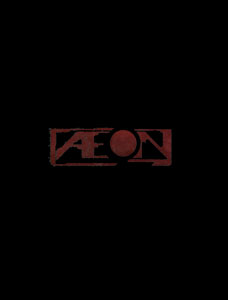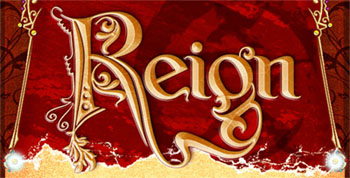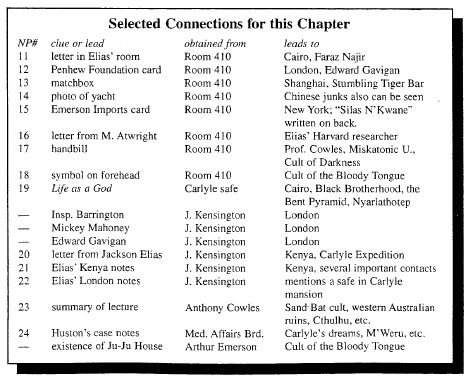After posting my review of The Paxton Gambit, this was the first review I wrote explicitly for RPGNet in 1998.
White Wolf had been trying to get a science fiction game published for awhile. Mark Rein*Hagen had spent a couple of years developing Exile, and when Aeon was first announced there was wide speculation that it was going to be a heavily retooled version of the same. It wasn’t.
Adding to the confusion, the owners of Aeon Flux sent a cease and desist order to White Wolf — apparently claiming a wide ownership of the name “Aeon” when used to describe any science fiction setting. So the game was retitled Trinity, but not before the initial, limited edition of the game had already shipped.
This edition of the game featured a hard shell of black plastic protecting a ring-bound document. This was controversial, but even years later I’m a fan. Unlike normal ring-binding, this was attractive and durable. But like normal ring-binding, it allowed the book to easily lay flat for easy reference during game sessions.
(What isn’t controversial is that the replacement edition — using a cheap cardboard shell and titled Trinity — was dreadful. Several years later, however, a great little softcover edition of the game was issued.)
 I picked up the limited edition of the Aeon game (now known as Trinity) for four reasons:
I picked up the limited edition of the Aeon game (now known as Trinity) for four reasons:
(1) I had been hearing about it and I knew it was going to be a major release. I try to stay on top of major releases so that I have my finger on the pulse of the gaming industry.
(2) Whatever else might be said about White Wolf games, I have always been able to rely on them for fantastic settings.
(3) I heard they had done some fix-up work on their Storyteller system — since I’ve always felt the system to be a good one at heart, despite some serious flaws, I wanted to see if they had finally fixed the problems with it.
(4) That black folder-flap design was just so sexy, you had to buy it.
So how does it stand up after my first read-through?
First, Trinity (the Game Formerly Known As Aeon) is definitely a major release and — with the recent death of the new Traveller game — has every chance of being the science fiction game for the next few years to come. I have no confidence in what I’ve seen of the Alternity game coming from TSR in the near future, and the only other strong contenders in the market right now would be Heavy Gear and Jovian Chronicles from Dream Pod 9 — both games which I feel fit better into the genre of “mecha games” than the genre of “science fiction games”. The graphical lay-out of the piece is the best I’ve seen from White Wolf, which is saying quite a bit given White Wolf’s history of strong graphical releases.
The setting, as is typical for White Wolf games, comes first — before the rules. It is told in the form of a “press release” or “official history” told from the perspective of the Aeon Trinity organization. The Aeon Trinity is a benign conspiracy of sorts which got its start in the early 20th century with a mission statement of helping guide humanity towards Unity (the first of three words which you’ll see on all of the Trinity ads). In the near future humans with bizarre psychic powers appear — these Aberrants get their powers from a tumorous growth in their brains referred to as the Mazarin-Rashoud node (after the scientists who discovered and explored it). Unfortunately this node also had the effect of slowly, over time, driving all of the Aberrants malevolently insane. The Aberrant War which ensued tore the world apart — destroying much of North America and Europe — until China threatened to destroy the planet from orbital nuclear stations unless the Aberrants left. Members of the Aeon Trinity left with them, in a supreme Sacrifice (the second of those three words) to help preserve mankind. China then, for reasons unknown, relinquished the incredible amount of power they had over the world.
The world then proceeded to rebuild itself. A few years ago people known only as Proxies appeared, and through an electrochemical process awakened the latent psi powers of mankind a second time. With the aid of the Aeon Trinity they revealed themselves to the world as benevolent helpers. The in the pseudo-science of the game, psi powers work by the manipulation of a previously undiscovered sub-atomic force particle named a “psion”. Due to the idiocy of the public the name of the force particle was extended to the psychic humans themselves and, along with several other nicknames, psions become the moniker of these new psychics.
With the aid of the psions specializing in teleportation mankind began to reach out into deep space — and made contact with their first alien species, the Qin.
A sidenote here: The treatment of aliens in Trinity is some of the best in RPGs to date. They aren’t just humans in fancy costumes, they think and behave differently than we do.
Then the Aberrants came back — and in a particularly vicious assault on an orbiting Earth station sent it crashing into France, destroying much of that country. Simultaneously with this assault the teleporters disappeared, cutting Earth off from its deep space settlements.
Now, a few years later, the first in a line of jumpships capable of interstellar travel without the aid of the teleporters is coming on-line. It’s time to take the fight back to the Aberrants with the aid of the psions — more limited in their power than the Aberrants, but capable of teamwork. The psions have given mankind Hope (and there’s the last of the three words).
Add to this the Chromatics, an apparently hostile race who appeared on the edges of human explored space just before the teleporters appeared, and the Coalition — a group of aliens who mysteriously attacked an Earth ship just as the game begins — and you’ve got an action packed game. And we haven’t even gotten into all the Earthside conflicts in the setting.
Unfortunately, there are a few problems. First, the book tells us almost nothing about what the Aberrants have been up to since their disappearance. This is all right since we can just have a few periphereal attacks until supplements telling us more come out so that we can take the fight to their own worlds, but far more egregious is the oversight of telling us what happened to the colony worlds in our years of absence. When a major plot of the game is supposedly “taking the fight back out there” it’s a little difficult to do that when we don’t know what it’s like out there — have our colonies all been destroyed? Are only some of them destroyed? Which ones?
Then we come to the Coalition. Literally the only thing we are told about them is that there has been contact between them and one of our ships, our ship was destroyed, and we don’t know anything else about them. Well, I guess I won’t be using them in any games until I’ve spent another $20 on a supplement to find out who the hell they are.
Nor are we told who the Proxies really are — which wouldn’t be so bad, but we aren’t told what their plans are. We are told again and agian of the “great plans” of the Proxies, yet we are never told what they are or given enough information about the Proxies to guess what they might be.
Only the Chromatics are usable as-is, but we don’t know much about them — so don’t use them too much.
Also, the psion “orders” are organized by both function and the predominant type of psion power found in them. This makes little sense — since one of the main things touted over and over again is the way different psions cooperate, the orders should be defined purely as functions, not functions and powers. The function of one order, for example, is to take the fight out to the Aberrants — yet there is only one type of psi power present in the order? This makes little sense.
So the setting is good, there’s just some fairly major holes left in it. Cliffhangers are good in fiction, and they can also be good in RPGs (witness the Heavy Gear game) — however, when everything important to the game is an unexplained cliffhanger I have some problems.
Which brings us to the system. If you’ve never had any problems with the Storyteller system before, this game will pose no problem. The Psi powers are nicely built into the game, although you may find them a little limiting in places due to the fact that you are railroaded along once you’ve selected your development paths.
If you’ve had problems with previous versions of the Storyteller system, this might be a good time to revisit it. In the original Storyteller system the most egregious problem was the fact that, above certain difficulty levels, the chance for you to botch on any given roll began to increase as your skill increased. To changes have been instituted in this new system to eliminate this problem. First, the target number is no longer variable and remains a stationary 7. Second, the “Rule of One” has been altered.
Another significant changes comes in the combat system, where a system of “Lethal damage” has been added — damage which cannot be soaked. This makes guns far more deadly in Trinity than they have been previously.
While both these changes fix a few problems which have been raised about Storyteller systems in the past, they do not fix them all (the probability curve is still more difficult to predict than your more traditional sytems). Nor do they change the basic aesthetic feel of the game. If you have a problem adding an attribute and a stat together based on the situation in question — or with rolling a fistful of d10s and counting successes — then you’re still not going to like the Storyteller system.
And what about that black cover? Well, it’s sexy and it’s cool. I don’t know if that still holds true for the new cover on the regular version of the game though.
So, to sum up:
The setting is great — if you don’t mind buying supplements. Otherwise you’re going to be left creating a lot of stuff from scratch and — worse yet — finding yourself incompatible with future releases when they do come out. About the only serious problem is the dual-definition of orders as both power-type and function — I would suggest GMs just quietly ignore one or the other and move on.
The system — while fixing many problems — is still the Storyteller system. If you’ve played the World of Darkness games you’re learning curve will not be steep, nor do I think you’ll find any of the changes to the rules harmful (although if you like non-deadly combat you might want to take those lethal damage rules back out again). If you simply dislike the idea of rolling many dice and counting successes — or the idea of finding both the most appropriate skill and attribute — you’re going to have to find something else to play the game with, or simply pass it over.
Overall, I would suggest buying this game. It’s a strong product. It does have its weak points however, and you might be advised to hold off for awhile until White Wolf’s supplements fill in some of those gaps.
Style: 5 (Excellent!)
Substance: 4 (Meaty)
Author: Andrew Bates and Ken Cliffe (Developers)
Category: game
Company/Publisher: White Wolf
Cost: $30.00
Page count: 320
ISBN: 1-56504-757-5
Originally Posted: 04/18/98
This review was cited by White Wolf developers as one of the factors that led to them revising the rulebook when it was re-released to include the key setting information necessary to run the game.
On a personal level, it played a major role in shaping my own personal theories on how roleplaying game lines could be effectively structured. I was accused of being “anti-supplement”, but that’s not the case: I just feel that supplements should be supplementary. An RPG’s core gameplay needs to be playable out of the rulebook.
I was also accused of being “anti-creative”, but obviously that’s not true, either. I do, however, feel that the point of buying an RPG product is that you don’t have to do the work for yourself. Saying that leaving out chunks of key information necessary for playing the game is OK because the GM can just “make it up for themselves” is just a variation on the Rule 0 Fallacy. You can make up your own rules, but the point of buying a rulebook is to save you the time, take advantage of someone else’s expertise, to try something new, or all of the above. And the same holds true for game settings and adventures.














